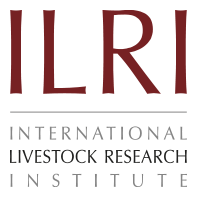Butana
Origin and distribution: Butana cattle breed have descended from the first zebu introduction into Africa from West Asia. This breed remained largely with nomadic pastoralists (Batahin, Shukria), but the Dongola and Shendi strains are kept by settled farmers. They inhabit the Butana plain in central Sudan, an acacia scrub and desert area lying between the Blue Nile and Atbara rivers. Being originated in the Butana plain, east of the Blue Nile, have spread to Gizera in central Sudan and along the river Nile in the northern region. They are referred to as Dar El Reih cattle across the White Nile in the northern part of Darfur and Kordofan.
Physical characteristics: As one of the Large East African Zebu breeds of cattle such as the present-day Boran of Ethiopia, Kenya and Somalia, the Butana breed of Sudan are very similar morphologically to the zebu breeds of Asia. The predominant coat colours is red or dark red, the tongue, muzzle eyelids and around the coronet are black; light red with white may also exist (Maule 1990). Dewlap is well developed and runs down in front of the forelegs forming few folds (Mason and Maule 1960) and is prominent in both sexes. Most of them possess small and black horns although some animals are polled. They have well developed thoracic or cervico-thoracic humps, which are large, hanging over backwards. The humps are relatively large in males but small in the cows (Mason and Maule 1960; Epstein 1971).
Peculiarity: Butana cattle have typical dairy characteristics with established history of active selection for milk production. Although they are raised as a dual purpose breed they are known for their good milk production. Like any other zebu cattle, the Butana cattle are known to be superior to the Humpless cattle in regulating body temperature (hence lower body water requirements). Their hardened hooves and lighter bones enable them to endure long migrations in acacia scrub and deserted area. These adaptive attributes have facilitated their importation and spread by Indian and Arabian merchants across the Red Sea to drier agro-ecological regions of the Horn of Africa (Loftus and Cunningham, 2000).
Breed status: The breed is not at risk of extinction. Their population size was 258 000 in 1991 (Rege 1999) and 1 000 000 in 1994 (DAD-IS, 2005). According to this FAO database, this breed has been subjected to extensive cross-breeding with European cattle (since 1956) and has also been exposed to extensive droughts in 1972/73, 1983/84, 1989/90. Consequently the breed is declining in numbers. The population size is much smaller than that reported in R-1992 as that report used the figure from the 1976 population census without taking subsequent droughts, wars and famines into consideration. The breed is still bred pure at the Atbara Research Station but not at NDRI, Shukaba.
Utility: They are used for milk, draught power and meat. At birth male calf weighs 21-26kg and female weigh 20-24kg. Average adult live weight for males and females is 370 and 320kg, respectively. Average height at withers for males and females was 151cm and 144cm, respectively. Age at first calving ranged from 3.2-3.7 years (Ageeb and Hillers, no date; DAGRIS, accessed in Sept 2005). The same authors reported that calving interval for Butana cattle at 12.4-16.3 months. The breed is known for good milk yield in a rather harsh climate, the milk yield per lactation ranging from 1200 to 1800kg in an average lactation of 240 days. A meta-analysis by DAGRIS (accessed in Sept 2005) yielded an average lactation milk yield of 3 626.7 kg. Lactation milk yield of these breeds, for example, is higher than that of the following breeds: Boran in Kenya (545-1 814 kg/139-303 days; Payne 1970); Arsi in Ethiopia (809 kg/272 days; Schaar et al. 1981); and Ankole in Uganda (318-817 kg/212-239 days; Payne 1970).
Ageeb A.G. and Hillers J.K. Production and reproduction characteristics of Butana and Kenana cattle of the Sudan. World Animal Review. (Available on the web: http://www.fao.org/ag/aga/agap/frg/feedback/war/u1200b/
u1200b0j.htm)
Epstein H. 1971. The origin of the domestic animals of Africa Volume I. Africana Publishing Corporation. New York. London. Munich. pp. 208-211.
Mason I.L. and Maule J.P. 1960. The indigenous livestock of eastern and Southern Africa. Common wealth Agricultural Bureaux. Farnham Royal, Bucks, England.
Maule J.P. 1990. The cattle of the tropics. Centre for Tropical Veterinary Medicine, University of Edinburgh, Great Britain. 225 pp.
Payne W.J.A. 1970. Cattle production in the Tropics. Volume 1, General introduction and breeds and breeding. Longman Group Ltd: London (UK). 336 pp.
Rege J.E.O. 1999. The state of African cattle genetic resources I. Classification framework and identification of threatened and extinct breeds. FAO/UNEP Animal Genetic Resources Information Bulletin 25:1-25.
Schaar J., Brannang E. and Meskel L.B. 1981. Breeding activities of the Ethio-Swedish integrated rural development project. Part 2. Milk production of zebu and crossbred cattle. World Animal Review. 37: 31-36.
http://www.fao.org/ag/aga/agap/frg/feedback/war/
u1200b/u1200b0j.htm
http://dad.fao.org/cgi-dad/$cgi_dad.dll/
BreedEdit?654,-1,s,Simp




